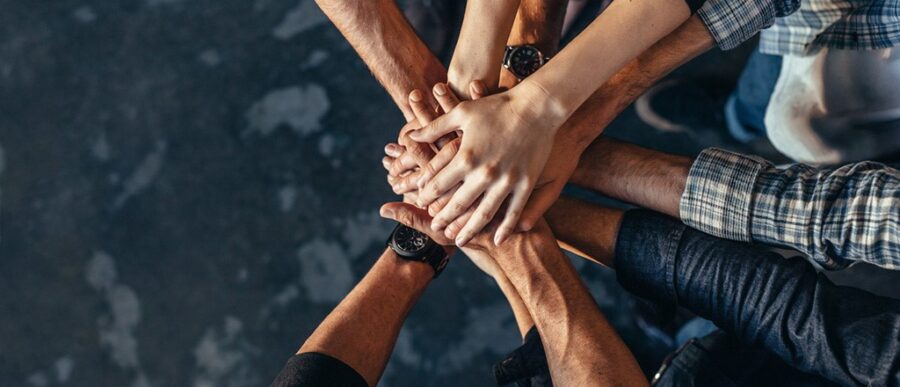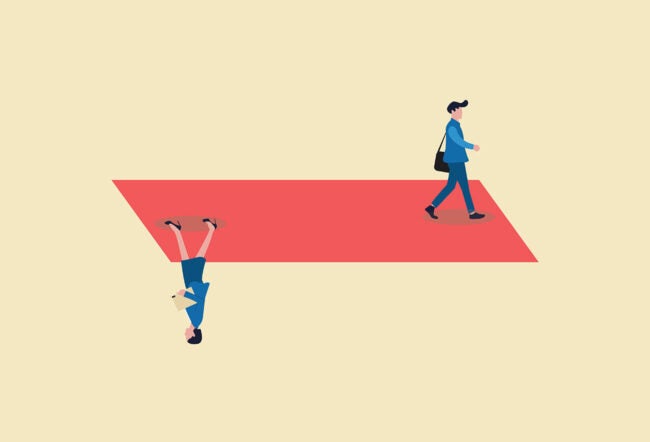Online restaurant reviews are bulging with complaints about terrible customer service. Wrong orders, dishes that take forever to arrive at the table, no one to refill your drink or deliver your check promptly. Poor service is irritating for diners, but it’s downright damaging for any restaurant. Enough bad experiences will keep customers away, drive down profits and eventually force the business to close. But there is a fix. Research from Serguei Netessine, Wharton professor of operations, information and decisions, and Tom Tan, professor of information technology and operations management at Southern Methodist University, finds that cooperation is the key to increasing team productivity among servers. Their study looked at how combining strong workers with weaker ones can improve success by fostering a more collaborative atmosphere. Netessine and Tan spoke on the Knowledge at Wharton radio show on SiriusXM about their paper, “When You Work with a Superman, Will You Also Fly? An Empirical Study of the Impact of Coworkers on Performance,” which was published in the INFORMS journal Management Science. (Listen to the podcast at the top of this page.)
An edited transcript of the conversation follows.
Knowledge at Wharton: Can you give us an overview of this research?
Serguei Netessine: To start with a big picture, if you look at industries like the restaurant industry, it’s huge. The statistics tell us that, at some point, half of the population of the United States has worked in a restaurant. Typically, these are part-time jobs. They don’t pay well. They don’t even pay minimum wage. The basic wage is very, very low, and you rely on tips. And restaurants, as a rule, don’t make a lot of money. We are talking about a couple of percentage points in profitability. The survival rate is very low. They go bankrupt all the time, and as a result, they don’t really think a lot about employees. For example, they don’t spend a lot of money on training employees or teaching them how to do work or giving them any kind of benefits. It’s not a very exciting industry from the point of view of HR practices.
If you think about teamwork, you think about a team of white-collar workers working on a project, or knowledge workers where you learn something from each other. But what do you learn in a restaurant? Waiters are pretty much independent. They get their own tables. They don’t seemingly interact much. Going into this work, our intention was to think about improving the profitability of a restaurant, but our expectation was that teamwork is really not a big deal in this industry.
Tom Tan: The topic of our research is about peer work. Understanding how co-workers affect each other can definitely have implications for team decisions — what type of workers should work together and how we should schedule them together for a particular shift.
My uncle used to be a cook, and I have been observing restaurants and have been interested in service operations for my research, so I’m very excited to do this research in this setting. We’ve found some pretty cool results.
“Some restaurants are beginning to pay attention to the fact that there is a drastic variance in productivity of waiters.” –Serguei Netessine
Knowledge at Wharton: Why doesn’t the restaurant industry think about how to pair the employees in a way that can improve profitability?
Tan: One of the reasons is that the restaurant industry is a pretty old and traditional industry, and the business model has been going like this for a very long time. Therefore, people are not really paying a lot of attention to the value of labor. And the labor — the waiters and the hosts — are typically not paid particularly well. The companies would think of them as an easy-to-access resource – they come and go — and are not really thinking about how to invest in them and how to put them to better use.
Nowadays, [restaurants] are using technology to track waiters’ performances and giving them scores and starting to think about how to better utilize the very valuable resources they have — the frontline workers that interact with the customers right on the floor.
Knowledge at Wharton: Are restaurant chains in the United States or abroad looking more carefully at teamwork?
Netessine: I haven’t really seen any evidence of that. I think there are some startups out there that are looking at the data. Points of sales in a restaurant have existed for a while now. A lot of those points of sales register the name of the waiter so you know exactly who served the table. Some restaurants are beginning to pay attention to the fact that there is a drastic variance in productivity of waiters. You know that there are people out there who are smiley and prompt and fast, and day after day, they get on average $5 more per table than others. Then there are those who come to work already bad mood and don’t know the menu and don’t really put in the effort and know they’re going to quit the next day. They produce less money for the restaurant. That’s very easy to see. You don’t need to be a genius in data analytics. You just do a basic summary of statistics, and you can see that.
Knowledge at Wharton: It isn’t just the servers. There’s the bus staff, the wait staff, the people who are cooking the food. There are so many different elements that can lead to the success for that particular point of sale between waiter/waitress and customer.
Netessine: Yes, absolutely. We have much more data on waiters than on, say, kitchen staff because it’s not entirely easy to measure their productivity. But to give some credit to restaurants, it’s not an easy problem even with waiters. For example, imagine I worked a shift today and sold a lot. Is that because it was Friday evening, or is it because I’m a great salesman? Or is it because the host gave me a big party where people were willing to spend their company’s money? You have to really think hard about those issues.
One of the first things we do in the paper is to figure out the innate productivity of a worker. You have to control for things like when are you working? For how many hours did you work? Was it Friday evening or Monday morning? Was it a big party or a small party? Was it a table where, because of you, they ordered a big bottle of wine? All of those things matter. And unless you analyze data carefully, you cannot figure out who is a good salesman and who is a bad salesman.
Knowledge at Wharton: What were your findings from looking at this?
“Understanding how co-workers affect each other can definitely have implications for team decisions.” –Tom Tan
Tan: We have a few main findings. The first one is that we find an inverted U-shaped relationship between co-workers’ abilities and a focal worker’s performance. What does this inverted U-shape mean? It’s basically saying that when the overall ability of the co-workers is low, increasing their ability will also increase the focal waiter’s sales performance. However, if the overall ability is very high, further increase in a co-worker’s ability will actually reduce the focal worker’s performance.
Netessine: Let me put it in simpler language. Let’s say you are a waiter, and you see people around you are just running faster and seem to be good at their work. You kind of start looking at them as, “OK, what can I learn? Maybe I should run faster? Maybe there are some tricks that I can use to work better myself.”
But then imagine you have a real Superman next to you. There is no way you can catch up. He is just so incredibly better — that de-motivates you. You say, “You know what? Forget it. I’m just not good at this stuff.” That’s the analogy. A co-worker who is a little bit better improves your productivity. If it’s a far superior human being, you kind of say, “No, I’m not even going to try.” That is why you have to think carefully about team composition. You have to say, “I have this team of very different people. How can I make the best use of it?”
Knowledge at Wharton: Did you find an understanding of the team concept by the workers in the restaurants that you studied?
Tan: If we consider this inverted U-shaped relationship, given a chance to redo the scheduling or the team composition decisions, we find that if we are able to increase the average team ability by about a dollar per person, then we’ll be able to increase the total sales by about 2.48% at no extra cost. We are not hiring better waiters. We’re just saying that we can reposition or put the waiters in different shifts. Without hiring more or reducing the current level of staffing, we may be able to increase the sales by about 2.48%.
Knowledge at Wharton: That would be the responsibility of the manager at the restaurant, correct?
Netessine: Yes, absolutely. Back to your question, do waiters realize that they are learning and speeding up in response to somebody else speeding up? We don’t have direct evidence of that. The data that we are looking at is point of sales data. But we do know that what’s important is that the waiters that learn from each other and react to each other have to be in eyesight…. We know that it’s “out of sight, out of mind” — if I don’t see you, you don’t affect me. It’s really about physically seeing what the other person is doing. That’s how we also see that physical distance matters. You learn from your closest peers because there is really no formal learning process there. People just come to work, and they work.
Knowledge at Wharton: Does the restaurant industry think about team productivity as a key to success?
“If you think about the manager of a restaurant, that’s rarely a person with a data analytics degree, and the company doesn’t make this data easily available for them.” –Serguei Netessine
Netessine: Frankly, I don’t think so. I’ve had quite a bit of experience with the restaurant industry, and Tom and I had written maybe half a dozen papers with various restaurant chains. Very, very few of them systematically analyze productivity of waiters. Most of the time, what you see is a restaurant manager who assigns waiters to shifts and hires waiters and fires waiters, based on just his or her impression, never really looking at numbers.
To give them some credit, there is really no time to look at numbers. If you think about the manager of a restaurant, that’s rarely a person with a data analytics degree, and the company doesn’t make this data easily available for them. So, you can understand why they do it the way they do. Our point in the paper is that you really have to help [managers]. You really need a centralized data analytics unit that looks at the data closely and gives them objective metrics of performance, which adjusts for things like working on Saturday evening versus Monday morning, so that managers’ decisions are not based just on intuition.
Tan: I agree. As business analytics is picking up, more and more companies are paying attention to waiters’ abilities and tracking their performance. We see a growing trend, but definitely they are not there yet. Nowadays, they roughly can say who might be a good server, who might be a strong server, and then they might schedule those workers in certain table sections. But this is very new. It’s just nascent, and there’s much more work to be done in this domain.
Knowledge at Wharton: If team productivity leads to profitability, then there is a significant need for the investment in the data and technology moving forward, correct?
Netessine: Yes, absolutely. What’s going to happen otherwise is what’s happening in the retail industry, where everybody complains that Amazon is killing them. Why does this happen? Because customers go to a physical store, and store associates cannot help them. They are not knowledgeable. Customers [then leave]. They say, “Hey, why do I want to go there? I can go to Amazon.”
Knowledge at Wharton: But people will always go out to eat.
Netessine: There is a fundamental missing link there. I don’t think restaurants think about their labor as a revenue-generating unit. They think there is a menu, there is a chef, and whatever happens between the chef and menu and the customer kind of doesn’t matter. But that last 10 feet is the most important because a good waiter can upsell, can cross-sell, and that’s what we show in the paper. These are the skills that you learn from co-workers. You learn how to upsell. You learn how to cross-sell. You learn how to run faster and bring another drink and so on. And that can increase your profitability much more than a new dish.
Knowledge at Wharton: Is change the ultimate goal you hope to come out of your work?
Netessine: Absolutely. To me, the restaurant industry is one of those that hasn’t changed its business model in hundreds of years. Making matters worse, a lot of restaurants are mom-and-pop businesses that never receive this kind of education. But there is no reason why we cannot have a next kind of big step there. There is some innovation going on. You have the OpenTables of the world, and equally, we need optimized labor.



